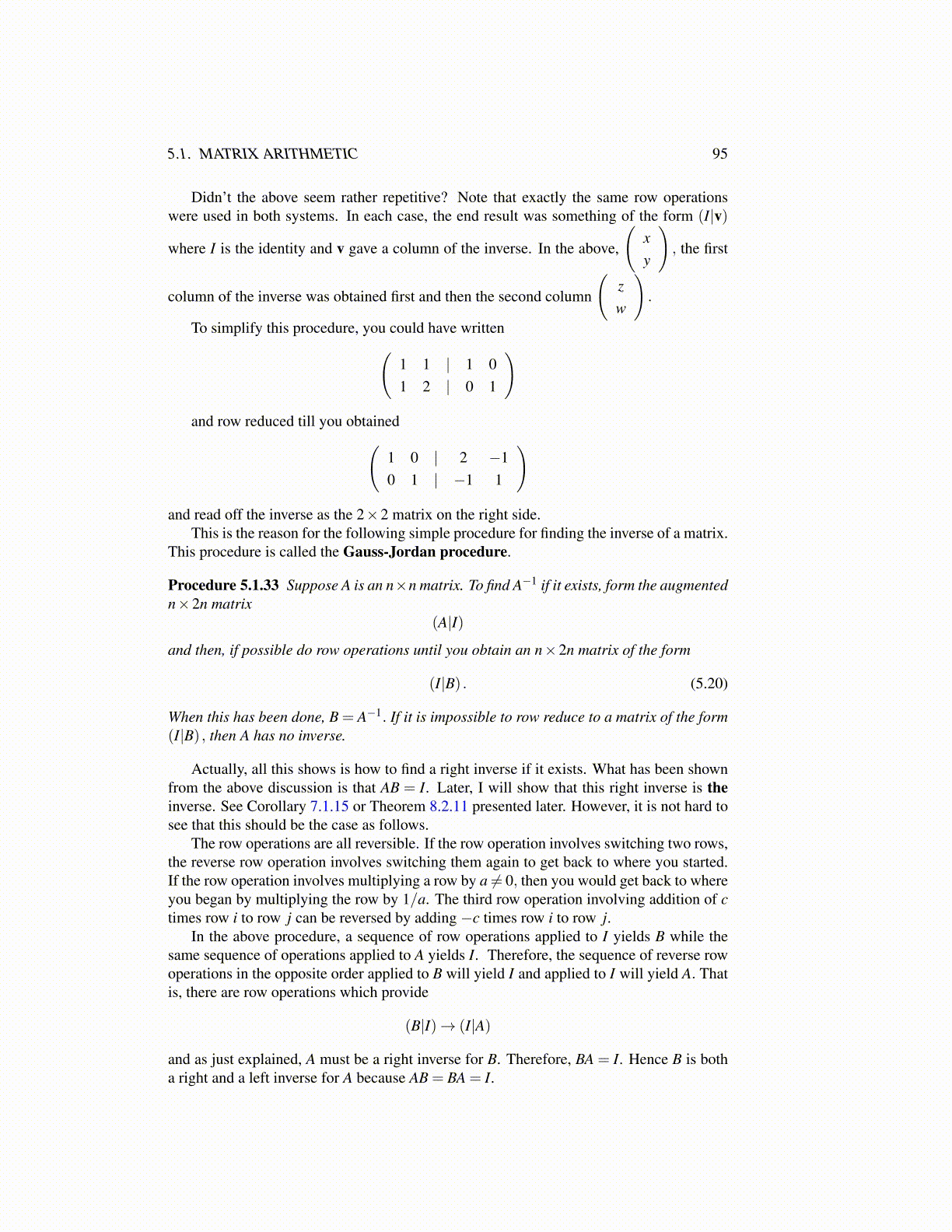
5.1. MATRIX ARITHMETIC 95
Didn’t the above seem rather repetitive? Note that exactly the same row operationswere used in both systems. In each case, the end result was something of the form (I|v)
where I is the identity and v gave a column of the inverse. In the above,
(xy
), the first
column of the inverse was obtained first and then the second column
(zw
).
To simplify this procedure, you could have written(1 1 | 1 01 2 | 0 1
)
and row reduced till you obtained(1 0 | 2 −10 1 | −1 1
)
and read off the inverse as the 2×2 matrix on the right side.This is the reason for the following simple procedure for finding the inverse of a matrix.
This procedure is called the Gauss-Jordan procedure.
Procedure 5.1.33 Suppose A is an n×n matrix. To find A−1 if it exists, form the augmentedn×2n matrix
(A|I)
and then, if possible do row operations until you obtain an n×2n matrix of the form
(I|B) . (5.20)
When this has been done, B = A−1. If it is impossible to row reduce to a matrix of the form(I|B) , then A has no inverse.
Actually, all this shows is how to find a right inverse if it exists. What has been shownfrom the above discussion is that AB = I. Later, I will show that this right inverse is theinverse. See Corollary 7.1.15 or Theorem 8.2.11 presented later. However, it is not hard tosee that this should be the case as follows.
The row operations are all reversible. If the row operation involves switching two rows,the reverse row operation involves switching them again to get back to where you started.If the row operation involves multiplying a row by a ̸= 0, then you would get back to whereyou began by multiplying the row by 1/a. The third row operation involving addition of ctimes row i to row j can be reversed by adding −c times row i to row j.
In the above procedure, a sequence of row operations applied to I yields B while thesame sequence of operations applied to A yields I. Therefore, the sequence of reverse rowoperations in the opposite order applied to B will yield I and applied to I will yield A. Thatis, there are row operations which provide
(B|I)→ (I|A)
and as just explained, A must be a right inverse for B. Therefore, BA = I. Hence B is botha right and a left inverse for A because AB = BA = I.